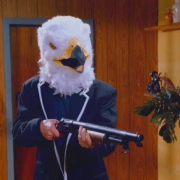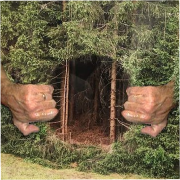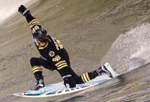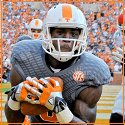|
Ran into this in the OSHA thread and it seemed relevant to the thread's interests.
|
|
|
|

|
| # ? Jun 3, 2024 13:33 |
|
Tomn posted:Ran into this in the OSHA thread and it seemed relevant to the thread's interests. Now that's minesweeper.
|
|
|
|
A one stroke penalty for a bombing raid seems kinda harsh.
|
|
|
|
Defenestrategy posted:A one stroke penalty for a bombing raid seems kinda harsh. Only if you're a pansy who flinched at a bomb while swinging. If the ball itself is blown up you just place it not closer to the hole.
|
|
|
|
"reasonably, but not guaranteed, safe distance"
|
|
|
|
|
Oh, this is too cute.
|
|
|
|
Here's a milhist question: Was Sarumans plan at Helm's Deep flawed? It seemed to almost work, before Gandalf showed up.
|
|
|
|
samcarsten posted:Here's a milhist question: Was Sarumans plan at Helm's Deep flawed? It seemed to almost work, before Gandalf showed up. You've probably already seen it but if not: https://acoup.blog/2020/05/01/collections-the-battle-of-helms-deep-part-i-bargaining-for-goods-at-helms-gate/
|
|
|
|
samcarsten posted:Here's a milhist question: Was Sarumans plan at Helm's Deep flawed? It seemed to almost work, before Gandalf showed up. Saruman's real downfall is not realising the Ents would attack him.
|
|
|
|
MikeC posted:I have no doubt people take pictures of all sorts but in the field, it is unlikely they pack 3+ pistols. Troopers in cavalry units in service with the army and not on irregular duties are far more likely to value their shoulder-fired weapons. Federal cavalry especially since as the war progressed, they were given the lion's share of the most advanced small arms such as revolver rifles and magazine-fed metal cartridge semi-automatics. I have read about Rebel "cavalry" units who were more robbers and partisans than anything else carry a pair on their bodies as well as additional pistols on pommel holsters because they would never be doing real fighting and the pistols were best when dealing with pursuing horsemen. My dude, it was a funny pic, no more.
|
|
|
|
Also a lot of those pictures are in studios. They probably have a bunch of props you can use, including more guns. I wouldn't look at them as factual representations of gear, they're dudes flexing so their mom has a cool photo to remember them by after they die of dysentery.
|
|
|
|
SerCypher posted:Also a lot of those pictures are in studios. Also a lot are probably from after the war, I have a picture of my grandmother's grandfather wearing his civil war uniform and holding a big-rear end revolver that was taken in the 1880s and shouldn't be taken as a representation of a Union soldier's load out.
|
|
|
SerCypher posted:Also a lot of those pictures are in studios. After all what soldier/kid wouldn't say "Hell yeah I do" when asked if they want more guns in the picture.
|
|
|
|
|
Arrath posted:After all what soldier/kid wouldn't say "Hell yeah I do" when asked if they want more guns in the picture. A picture of a pair of tiny eyes peering through an enormous stack of firearms - Tommy, age 13.
|
|
|
|
RIP Tommy, shat himself to death before firing any of those guns.
|
|
|
|
Xiahou Dun posted:A picture of a pair of tiny eyes peering through an enormous stack of firearms - Tommy, age 13. 
|
|
|
|
Tomn posted:But as a general thing regarding more pistols being better than, it does seem like you'll reach a point of diminishing returns pretty quickly where the odds of your ever needing to whip out the other pistols in a serious combat scenario goes down with each additional pistol until they end up having minimal combat utility but still take up weight and space all the same. Wish I could find that article. It might be this one (although the 1907 date sounds late) but I can't check because I've not been a student in years. Edit: And whoever asked about the sword and gun style, here's what Michael Hundt had to say in 1611: 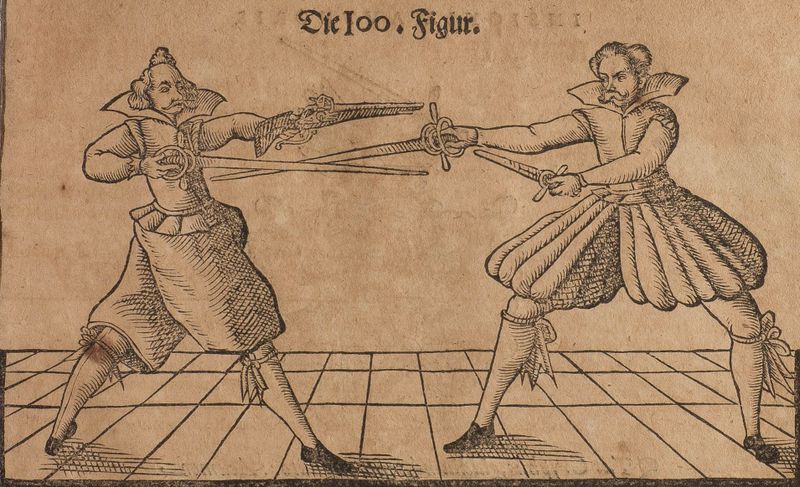 quote:It sometimes helps wonderfully, when brisk people come together, whether Noble or non Noble, and are there to fight with hatred, how also today the weapons in the brawling are not equal, and may soon reduce one to the other in thrusting and in cutting, how it is now the custom in several Lands, which is also heard, where one has a dagger and rappier and the other has a short barreled weapon and rappier, and rather, when one is forced to use rappier and dagger, and he has learned nothing of it: So your grace, instead of the Dagger, take a short barreled weapon, and there it will be well revealed, what is the best thing to do, or not, Where dissimilar weapons before the opponent will be used, then in the case of emergency must one use, what one can think of, because it is all come to the utmost, now in these dangerous times in the World. Siivola fucked around with this message at 09:07 on Jan 10, 2023 |
|
|
|
Bill Shakespeare on the left there apparently brought a piece to a knife fight
|
|
|
|
Die 100. Figur, die
|
|
|
|
Oh! Sendeth thou for a physician! But 's truth, not for me!
|
|
|
|
I feel like Iíve asked this before but I've forgotten. When cavalry or skirmishers "screen" other forces, what are they actually doing?
|
|
|
|
Maintain a loose perimeter a certain distance out in front or around the main force. The point being to spot ambushes and stop skirmishers from the other side from scouting their disposition or taking pot-shots at your main force as they are forming up.
|
|
|
|
Could you recommend a good source that explains that in detail? The Crecy book I listened to earlier made me realize I can't really imagine how things look from a scoutís perspective, because Iíve only looked at battles from above in games and books.
|
|
|
|
Siivola posted:Could you recommend a good source that explains that in detail? The Crecy book I listened to earlier made me realize I can't really imagine how things look from a scoutís perspective, because Iíve only looked at battles from above in games and books. https://en.m.wikipedia.org/wiki/Failure_in_the_Saddle Is an easy read for civil war era. Focuses on a specific campaign but can be applied to how cavalry was viewed in that war.
|
|
|
|
Now there's a title.
|
|
|
|
Problem exists between reins and saddle
|
|
|
|
Ensign Expendable posted:Problem exists between reins and saddle this is why they're called troubleshooters
|
|
|
|
Siivola posted:The Crecy book I listened to earlier made me realize I can't really imagine how things look from a scoutís perspective, because Iíve only looked at battles from above in games and books. Fictional work tends to show scouts as individuals or small groups of men, but these would have been substantial units. Dozens if not hundreds of men, and almost always mounted if possible. Detailed topographical maps aren't a thing until the 1800s, so you'd rely on scouts and local guides to get your army from point A to point B each day. You often hear or read that they're the "eyes" of the army, which is a common analogy for good reason. Is the bridge that's supposed to be ahead still there? Are there settlements your army can buy (or take) supplies from? These are things a pre-modern army needs to know well before they actually get to the location. Fiction also tends to show them as being just ahead of the army, like by a few hundred yards maybe, but in reality they'd be several hours and miles ahead. But not too far ahead. It doesn't do a pre-modern general any good to have scouts three days in front of him who can't report on what's ahead. So generally the scouts are back and camped with the rest of the army at night. In fact, it was probably part of their role to find a suitable camp site for the army. The next day, the scouts would leave several hours before the rest of the army gets moving and do it all over again. In addition, there's the obvious need to pinpoint where the enemy is as best as possible. In pre-industrial times there were limited options for where you can take an army, even a small army. Armies moving by land are generally restricted to major roadways in order to accommodate wagons and draft animals to carry supplies, and both sides know that. Even if your army isn't using draft animals, they're still going to be following the road most of the way because settlements are along roads, and they'll need these settlements in order to feed themselves. So an army defending their territory knows that an invading force will likely only have a handful of potential routes they can go. A defender would want to find out which road the enemy was taking, and the invaders would want to know if the road ahead was defended. Both sides would have sent mounted scouts ahead of the main army to check. It's like a big game of hide and seek. Regardless of your intentions, you want to find the enemy before they find you so you. This is where screening comes in. Basically, your scouts want to kill their scouts whenever possible (metaphorically blinding them) so that you can take advantage of the enemy's lack of information in some way. Don't know if that helps you visualize their role better at all. Jamwad Hilder fucked around with this message at 22:57 on Jan 10, 2023 |
|
|
|
That does help a lot, thanks! I guess skirmishing infantry do the same thing, but on a smaller scale? So instead of riding to the next town to see what's up, they would hustle up a key hill to make sure there's nobody hiding behind it in ambush? Unfortunately I can't find a copy of Siivola fucked around with this message at 06:48 on Jan 11, 2023 |
|
|
|
Siivola posted:That does help a lot, thanks! I guess skirmishing infantry do the same thing, but on a smaller scale? So instead of riding to the next town to see what's up, they would hustle up a key hill to make sure there's nobody hiding behind it in ambush? Infantry either in march or battle always throws out their own screen but they would be within a couple of hundred yards of the main body. Their job would be the immediate security of the command and would serve two purposes. The first would be to protect against enemy skirmishers so the main body couldn't get harassed while in the battle line or to warn their troops to get into battle line if the enemy wasn't spotted and the march column was about to be hit. The second was to provide a first layer of resistance to see how determined an enemy attack was or the likelihood that the enemy was just demonstrating to tie down resources. Opposing skirmishers leading an attack would pressure hard to push in pickets and defending skirmishers to mask the strength of the attack as long as possible or if the attack was a demonstration, to try and prevent defending skirmishers from providing accurate information. The difference is that these skirmishers would be tactical while the cavalry screens would operate at a higher level denying information on army or sub-unit movements as a whole during the movement prior to a major fight. Once it was certain enemy infantry was in front of you, cavalry typically retired to the flanks or rear to guard ammunition trains.
|
|
|
|
Siivola posted:If I were to get into the ACW in general, is The Battle Cry of Freedom still the go-to book, or is there a better introduction these days? I've read that recently and it's a good general history with fairly current research. I like Bruce Catton's stuff for the quality of the prose, but I'd recommend being able to tell when he's wrong before going for his narrative.
|
|
|
|
Yeah, to put some importance of the limited understanding of terrain based on maps in perspective, the beginning of the Atlanta Campaign of 1864 was Johnston's very strong position around Dalton getting turned because he missed an undulation in land called the Snake Creek Gap which was left uncovered and allowed one of Sherman's armies to get in behind his whole position, forcing him to leave very strong fortifications.
|
|
|
|
Shrouds of Glory: From Atlanta to Nashville https://www.goodreads.com/book/show/2706090-shrouds-of-glory The Battle of Franklin: When the Devil Had Full Possession of the Earth https://www.goodreads.com/en/book/show/7181655-the-battle-of-franklin I picked up both of these books over the holidays when visiting the Carter House and Carnton Plantation in Franklin, TN. Read together, they give a great timeline of how the armies and logistics worked in the geography during the last Confederate offensive campaign. Imagine dropping rocks or having rock dropped on you from Lookout Mountain: 
|
|
|
|
Siivola posted:That does help a lot, thanks! I guess skirmishing infantry do the same thing, but on a smaller scale? So instead of riding to the next town to see what's up, they would hustle up a key hill to make sure there's nobody hiding behind it in ambush? For a Napoleonic corps on the march, that hill would already have been scouted by cavalry probably a day or so in advance. If the enemy were occupying it already, cavalry would take it under observation. If not, the cavalry might put a small picquet force on the hill. By the time the infantry arrives, with an open order screen, you already ought to know what is on that hill. You might not know how strong and how much, but if your cav does its job they won't overlook a key feature like that. You'll probably push skirmishers up that hill if it's so important, but that's more to secure the ground rather than scout what's up there.
|
|
|
|
If you want to know how cavalry was used in the ACW, Gettysburg itself offers one of the most clear examples of the importance of cavalry. Union cavalry under Gen. John Buford were scouting for a newly-agile Army of the Potomac which had just replaced Worst General Ever Joe Hooker with Nobody Will Remember Who Led the Union at Gettysburg Gen. George Meade. Robert E. Lee, who was unaware that his enemy's main force was now much, much closer than he thought it would be, had sent a brigade under JJ Pettigrew to "requisition" some shoes from the nearby town of Gettysburg, where they encountered Buford's cavalry. The rebels thought the Union cav was just local militia, and didn't even engage until much later, Buford quickly realized he was facing a large Confederate force and quickly dismounted and deployed his troops to hold the high ground of the nascent battlefield long enough for a full corps of the AoP to move up to properly invest the town. Contrast with CSA Cavalry commander Gen. Jeb Stuart, who was by all accounts a dashing and gallant cavalry officer, liked to own the Feds by riding his entire division around and through their whole dang army, decided to do that instead of what he was ordered to do, which was screen the right flank of the Army of Northern Virginia while it moved elements across a river. You know, in case the entire Union army showed up or something. When Jeb finally arrived in the middle of the battle, Lee hit him with a 'General you are here at last' and was cold to him and I understand did not even offer him an iced tea or other cool repast, despite the perishing heat of the afternoon.
|
|
|
|
zoux posted:had sent a brigade under JJ Pettigrew to "requisition" some shoes from the nearby town of Gettysburg, This is a myth. I can cite print books if you like, but here, here. zoux posted:Contrast with CSA Cavalry commander Gen. Jeb Stuart, who was by all accounts a dashing and gallant cavalry officer, liked to own the Feds by riding his entire division around and through their whole dang army, decided to do that instead of what he was ordered to do, which was screen the right flank of the Army of Northern Virginia while it moved elements across a river. You know, in case the entire Union army showed up or something. When Jeb finally arrived in the middle of the battle, Lee hit him with a 'General you are here at last' and was cold to him and I understand did not even offer him an iced tea or other cool repast, despite the perishing heat of the afternoon. This is also largely a myth, promulgated to protect Lee's "ever victorious" reputation. The fact is that Lee's orders to Stuart were ambiguous - if he wanted Stuart to screen, not raid, he should have told him to screen, not raid. But he didn't, Lee lost, and blame had to go somewhere. (A source, I can cite print sources as well.)
|
|
|
|
quote:Looking across the broad sweep of events, judging Jeb Stuartís performance isnít as simple as it seems. Certainly, not all of his objectives were fulfilled. Most prominently, Stuart spent most of the campaign on a wild raid in which he was out of contact with his commander. He never linked up with General Ewell (not in a timely fashion, at any rate), and Lee was not kept appraised of the enemyís movement. Whatever his raid may have accomplished, it also fatigued his troopers and possibly limited their effectiveness in the final fight on July 3rd. quote:Most prominently, Stuart spent most of the campaign on a wild raid in which he was out of contact with his commander. Seems pretty damning. Didn't know that Lee had that many cav on hand, why didn't he use them?
|
|
|
|
zoux posted:Seems pretty damning. Didn't know that Lee had that many cav on hand, why didn't he use them? Dunno, maybe Lee wasn't as good as his reputation? Edit to add: I don't claim to be an expert here; my take is based on a class I took on US Civil War history, where prof was quite critical of Lee's performance at Gettysburg. Cessna fucked around with this message at 17:23 on Jan 11, 2023 |
|
|
|
zoux posted:Seems pretty damning. Didn't know that Lee had that many cav on hand, why didn't he use them? Of the 4 brigades left to Lee, two were essentially partisan/home guard cavalry (Imboden and Jenkins) and assigned to areas of least risk due to being untested and unreliability. The other 2 brigades (Robertson and Jones) were left the responsibility of blocking Snickers and Ashby Gap. The former were in proper screening position and Imboden turned out to be a good commander. Jenkin's brigade came up short and Ewell's men were generally not impressed. Jones and Robertson were supposed to keep watch and pass movement of Federal forces to Lee while Stuart was incommunicado but it is likely they were overtaxed and had personality issues between them. The timeline of events meant that for Lee to cover Stuart's mistake, he would have had to know immediately that the Stuart would fail his screening mission and reassign that task even before Stuart left Middleton. Not a realistic option for Lee
|
|
|
|

|
| # ? Jun 3, 2024 13:33 |
|
MikeC posted:Of the 4 brigades left to Lee, two were essentially partisan/home guard cavalry (Imboden and Jenkins) and assigned to areas of least risk due to being untested and unreliability. The other 2 brigades (Robertson and Jones) were left the responsibility of blocking Snickers and Ashby Gap. I feel like that's pretty critical information to leave out of an article weighing the culpability of Stuart's raid.
|
|
|







